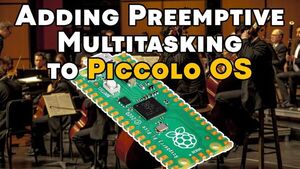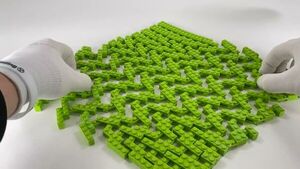2022-09-08 - Nº 384
Editorial
Esta é a Newsletter Nº 384 que se apresenta com o mesmo formato que as anteriores. Se gostar da Newsletter partilhe-a!
Todas as Newsletters encontram-se indexadas no link.
Esta Newsletter tem os seguintes tópicos:
Faz hoje anos que nascia, em 1588, o matemático francês Marin Mersenne. Ele foi responsável pela descoberta dos números Mersenne, que é considerada como tendo sido um esforço pioneiro para obter uma fórmula que representasse todos os números primos. Apesar de ter falhado nesta tarefa, o seu trabalho sobre números da forma (2 p - 1), onde p é primordial, tem sido de interesse contínuo na investigação de grandes primos. Embora os números Mersenne representem apenas alguns primos, a sua fórmula inspirou grandes avanços na teoria dos números. Prosseguiu alguns dos trabalhos de acústica de Galileu e estimulou algumas das descobertas posteriores do próprio Galileu. Foi através dele que o trabalho de Galileu se tornou conhecido fora de Itália. Mersenne propôs o uso do pêndulo como dispositivo de cronometragem a Huygens, que o utilizou pela primeira vez num relógio.
Faz também hoje anos que nascia, em 1848, o químico orgânico alemão Viktor Meyer. Ele contribuiu grandemente para o conhecimento da química orgânica e inorgânica e inventou um aparelho para determinar as densidades de vapor (e portanto os pesos moleculares), agora com o seu nome. Em 1871, Meyer provou experimentalmente a hipótese de Avogadro ao medir as densidades de vapor de substâncias voláteis (peso molecular, ou massa molecular relativa, é o dobro da densidade de vapor). Ele passou a determinar as densidades de vapor de substâncias inorgânicas a altas temperaturas. Do benzeno obtido do petróleo, Meyer em 1883 isolou o tiofeno, um composto heterocíclico contendo enxofre, que muito mais tarde se tornaria um importante componente de várias drogas sintéticas.
Faz igualmente hoje anos que nascia, em 1857, a Fisiologista norte-americana Ida Henrietta Hyde. Ela inventou o micro-electrodo na década de 1930. Este pequeno dispositivo estimula uma célula viva, quer química quer electricamente, e regista a actividade eléctrica dentro da célula. Os seus primeiros passos incluem ser a primeira mulher a formar-se na Universidade de Heidelberg (1896), a fazer investigação na Faculdade de Medicina de Harvard (no Departamento de Fisiologia) e a ser eleita para a Sociedade Americana de Fisiologia. Diz-se que o micro-electrodo revolucionou a neuro-fisiologia. Ela pesquisou o movimento cardíaco animal, circulação, respiração, e sistemas nervosos. Investigou o mecanismo respiratório do caranguejo-ferradura e do gafanhoto, e o centro respiratório do skate, anfíbios e mamíferos.
Por fim, faz hoje anos que nascia, em 1918, o químico inglês Derek Barton. Ele recebeu em conjunto com o norueguês Odd Hassel o Prémio Nobel da Química de 1969 pela investigação que ajudou a estabelecer a análise conformacional (o estudo da estrutura geométrica tridimensional de moléculas complexas). Num breve artigo na Experienta intitulado "The Conformation of the Steroid Nucleus" (1950), Barton mostrou que às moléculas orgânicas em geral e às moléculas de esteróides em particular poderia ser atribuída uma conformação preferida baseada no trabalho de físicos químicos, em particular por Odd Hassel. A análise conformacional é útil na elucidação da configuração, no planeamento da síntese orgânica, e na análise dos mecanismos de reacção. É fundamental para uma compreensão completa dos processos enzimáticos.
Na Newsletter desta semana apresentamos diversas noticias, artigos científicos, projetos de maker e alguns vídeos interessantes.
 João Alves ([email protected])
João Alves ([email protected])
O conteúdo da Newsletter encontra-se sob a licença  Creative Commons Attribution-NonCommercial-ShareAlike 4.0 International License.
Creative Commons Attribution-NonCommercial-ShareAlike 4.0 International License.
Novidades da Semana
Outras Notícias

A Cosmic Tarantula, Caught by NASA’s Webb
"The cycle of star formation is on display in this nearby nebula. Webb’s MIRI instrument captures protostars nestled deep in clouds of gas and dust, still gathering mass. Once upon a space-time, a cosmic creation story unfolded: thousands of never-before-seen young stars spotted in a stellar nursery called 30 Doradus, captured by NASA’s James Webb Space Telescope. Nicknamed the Tarantula Nebula for the appearance of its dusty filaments in previous telescope images, the nebula has long been a favorite for astronomers studying star formation. In addition to young stars, Webb reveals distant background galaxies, as well as the detailed structure and composition of the nebula’s gas and dust. At only 161,000 light-years away in the Large Magellanic Cloud galaxy, the Tarantula Nebula is the largest and brightest star-forming region in the Local Group, the galaxies nearest our Milky Way." [...]

Intel and Broadcom Achieve Major Wi-Fi 7 Industry Milestone
"Today, Intel Corporation and Broadcom Inc. showcased the industry’s first cross-vendor Wi-Fi 7 demonstration, with over-the-air speeds greater than 5 gigabits per second. The trial used an Intel® Core™ processor-based laptop with a Wi-Fi 7 solution connected to a Broadcom Wi-Fi 7 access point. “We are proud to highlight how next-generation Wi-Fi 7 can make new mobile PC experiences possible. Industry collaboration is essential to ensure we deliver on the promises of this new wireless technology. We would like to thank our colleagues at Broadcom for their great technical cooperation, which helped enable this unprecedented, first-of-its-kind demonstration of ultra-high speed and ultra-low latency Wi-Fi 7,” said Carlos Cordeiro, Intel Fellow and Wireless CTO, Client Computing Group, Intel. Vijay Nagarajan, vice president, Wireless Connectivity Division, Broadcom, said, “Today’s milestone sends a clear message: the ecosystem is ready and Wi-Fi 7 is here to deliver extraordinary capacity and blazing fast speeds to extend gigabit broadband." [...]

Flexible power modules from STMicroelectronics simplify SiC inverter designs
"STMicroelectronics has released two STPOWER modules that contain 1200V silicon-carbide (SiC) MOSFETs in popular configurations. Each uses ST’s ACEPACK1 2 package technology to ensure high power density and simplified assembly. The first of the new modules, the A2F12M12W2-F1, is a four-pack module that provides a convenient and compact full-bridge solution for circuits such as DC/DC converters. Another module, the A2U12M12W2-F2, employs a three-level T-type topology to combine high conduction and switching efficiency with consistent output-voltage quality. The MOSFETs in these modules leverage ST’s second-generation SiC technology, which has an outstanding RDS(on) x die-area figure of merit to ensure high current-handling capability with minimal losses. With 13mΩ typical RDS(on) per die, both full-bridge and T-type topologies tackle high-power applications and ensure excellent energy efficiency with simplified thermal management due to low dissipation." [...]

Renesas Extends Leading RISC-V Embedded Processing Portfolio with New Motor Control ASSP Solution
"RISC-V based ASSP Offered in Collaboration with Ecosystem Partners Delivers Complete, Production-Ready Motor Control System Solution. Renesas Electronics Corporation (TSE: 6723), a premier supplier of advanced semiconductor solutions, today introduced the industry’s first RISC-V MCU specifically optimized for advanced motor control systems. The new solution enables customers to benefit from a ready-to-use, turnkey solution for motor control applications, with no development cost. Customers benefit from reduced time to market and cost reductions with the delivery of a pre-programmed ASSP that eliminates RISC-V related tools and software investment. Target applications for the new solution include home/building automation, healthcare devices, home appliances, drones and more. Renesas has taken a leadership role in delivering RISC-V embedded processing solutions, having recently introduced the 64-bit general-purpose RZ/Five MPUs based on a 64-bit RISC-V CPU, and announcing development of RISC-V automotive solutions, as well." [...]

STMicroelectronics sets the scene for advanced in-car safety and comfort with new hybrid sensor for full interior monitoring
"As leading automotive markets start to mandate driver-monitoring systems (DMS), STMicroelectronics (NYSE: STM), a global semiconductor leader serving customers across the spectrum of electronics applications, is already equipping carmakers with the required technologies. While DMS promises greater road safety by assessing driver alertness, the next-generation dual image sensor ST announced today monitors the full vehicle interior covering both the driver and all passengers. New applications enabled by ST’s new image sensor include passenger safety-belt checks, vital-sign monitoring, child-left detection, gesture recognition, and high-quality video/picture recording. “The DMS market is growing at a double-digit pace. ST’s new image sensor is set to push that forward by enabling brands to create new services and deliver even greater value for vehicle users, leveraging complete in-cabin monitoring that covers multiple occupants,” said Eric Aussedat, Executive Vice President, Imaging Sub-Group General Manager, STMicroelectronics. “Our market-leading DMS sensor provided the perfect launchpad to take the technology further and empower new innovations.” The new sensor, the VD/VB1940, delivers a cost-effective solution that combines the sensitivity and high resolution of infrared sensing with high dynamic range (HDR) color imaging in a single component." [...]
Ciência e Tecnologia

Revolutionizing image generation by AI: Turning text into images
"The Machine Vision & Learning Group led by computer scientist Björn Ommer has developed one of the most powerful image synthesis algorithms in existence. Creating images from text in seconds – and doing so with a conventional graphics card and without supercomputers? As fanciful as it may sound, this is made possible by the new Stable Diffusion AI model. The underlying algorithm was developed by the Machine Vision & Learning Group led by Prof. Björn Ommer (LMU Munich). “Even for laypeople not blessed with artistic talent and without special computing know-how and computer hardware, the new model is an effective tool that enables computers to generate images on command. As such, the model removes a barrier to ordinary people expressing their creativity,” says Ommer." [...]
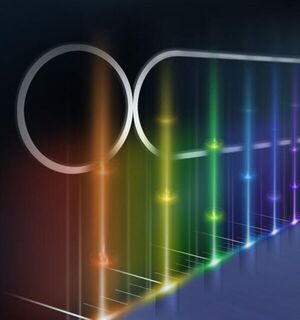
New on-chip frequency comb is 100x more efficient
"Device opens the door to applications in optical communications, sensing, and the search for exoplanets. On-chip laser frequency combs — lasers that emit multiple frequencies or colors of light simultaneously separated like the tooth on a comb — are a promising technology for a range of applications including environmental monitoring, optical computing, astronomy, and metrology. However, on-chip frequency combs are still limited by one serious problem — they are not always efficient. There are several ways to mitigate the efficiency problem, but they all suffer from trade-offs. For example, combs can either have high efficiency or broad bandwidth but not both. The inability to design an on-chip laser frequency comb that is both efficient and broad has stymied researchers for years and hindered the widespread commercialization of these devices." [...]

UD engineers harness the power of artificial intelligence and acoustic engineering to explore underwater worlds
"About 125 miles off the New England coast, a small group of researchers from the University of Delaware’s College of Engineering are harnessing the power of underwater acoustics, big data and machine learning to better understand what lies deep beneath the surface. Just as marine mammals like bottle-nose dolphins use echolocation to emit pulses of sound to detect objects underwater, so too are these researchers relying on the phenomenon of sound waves and how they reverberate to understand what they cannot see. By using acoustic technologies that can transmit signals and information in a complex aquatic environment, engineers can study the ocean at a much larger scale and finer details than currently possible. “This remote sensing is similar to using ultrasound for exploring the inside of the human body, except here we use different sound frequencies and we aim to study inside the ocean environment,” said Mohsen Badiey, an acoustic oceanographer and electrical engineering professor. “Now, say we can modernize that process. The research we’re doing is remote sensing of the properties of the environment from within the water column.” The team, led by Department of Electrical and Computer Engineering’s Badiey and Lin Wan, an assistant professor, is measuring underwater sound in order to determine the composition and the physical properties of the ocean environment." [...]
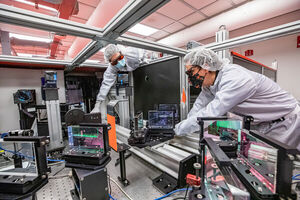
Upgraded Laser Facility Paves the Way for Next-Generation Particle Accelerators
"Advances in physics, medicine, and security enabled by major expansion to one of the world’s most powerful lasers. Researchers at Lawrence Berkeley National Laboratory (Berkeley Lab) have completed a major expansion of one of the world’s most powerful laser systems, creating new opportunities in accelerator research for the future of high-energy physics and other fields. The expansion created a second beamline for the petawatt laser at the Berkeley Lab Laser Accelerator (BELLA) Center, enabling the development of next-generation particle accelerators for applications in science, medicine, security, and industry. The second beamline came online this summer and is the culmination of several years of planning, design, and engineering by the BELLA and engineering teams. “We are happy to see construction completed and are very eager to begin the wide variety of exciting experiments that are enabled by the second beamline,” said Eric Esarey, Director of the BELLA Center. Using light to move particles Traditional accelerators use radio-frequency electromagnetic fields to gradually speed particles up over distances of tens of kilometers and tend to be huge and very expensive as a result." [...]
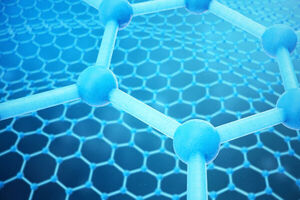
ITMO Researchers Suggest All-Optical Data Processing Method Using Heating
"Metal-organiс frameworks (MOFs) are a new class of compounds that is famous for its unique properties. They have been considered a functional material for gas adsorption, industrial membranes, and catalysts; however, researchers from ITMO have gone further and decided to zone in on MOFs’ optical properties. In a recent paper, they demonstrated that thanks to MOFs’ flexibility, these properties can be changed when subjected to lasers. This new effect can pave the way for all-optical data encoding, transfer, and storage. What are metal-organic frameworks Imagine a metal’s crystalline lattice as a cube, with the metal’s atoms in the corners and the cube’s faces symbolizing the links between them. Now, imagine that instead of links, there are long organic molecules." [...]
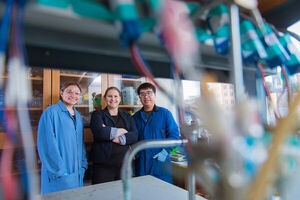
Turning carbon dioxide into valuable products
"Assistant Professor Ariel Furst and her colleagues are looking to DNA to help guide the process. Carbon dioxide (CO2) is a major contributor to climate change and a significant product of many human activities, notably industrial manufacturing. A major goal in the energy field has been to chemically convert emitted CO2 into valuable chemicals or fuels. But while CO2 is available in abundance, it has not yet been widely used to generate value-added products. Why not? The reason is that CO2 molecules are highly stable and therefore not prone to being chemically converted to a different form." [...]

Birmingham telescope discovers two new temperate rocky worlds
"An international research team has announced the discovery of two "super-Earth" planets orbiting a star 100 light-years from Earth. The team, which includes astronomers at the University of Birmingham detected the planets orbiting LP 890-9, a small, cool star located about 100 light-years from Earth. The star, also called TOI-4306 or SPECULOOS-2, is the second-coolest star found to host planets, after the famous TRAPPIST-1. This rare discovery is the subject of a forthcoming publication in the journal Astronomy & Astrophysics. The system's inner planet, called LP 890-9b, is about 30% larger than Earth and completes an orbit around the star in just 2.7 days. This first planet was initially identified as a possible planet candidate by NASA's Transiting Exoplanet Survey Satellite (TESS), a space mission searching for exoplanets orbiting nearby stars." [...]

Major leap for stable high-efficiency perovskite solar cells
"Solar cells manufactured from materials known as “perovskites” are catching up with the efficiency of traditional silicon-based solar cells. At the same time, they have advantages of low cost and short energy payback time. However, such solar cells have problems with stability – something that researchers at Linköping University, together with international collaborators, have now managed to solve. The results, published in Science, are a major step forwards in the quest for next-generation solar cells. “Our results open new possibilities to develop efficient and stable solar cells. Further, they provide new insights into how the doping of organic semiconductors works,” says Feng Gao, professor in the Department of Physics, Chemistry and Biology (IFM) at Linköping University." [...]

Fast charging over 10,000 cycles: For future electric vehicles, Harvard engineers’ solid-state battery technology points to a leap in performance and reliability
"Startup Adden Energy granted technology license from Harvard to scale innovative lithium-metal battery technology for commercial deployment. Harvard’s Office of Technology Development has granted an exclusive technology license to Adden Energy, Inc., a startup developing innovative solid-state battery systems for use in future electric vehicles (EVs) that would fully charge in minutes. Adden Energy has closed a seed round with $5.15M in funding led by Primavera Capital Group, with participation by Rhapsody Venture Partners and MassVentures. The license and the venture funding will enable the startup to scale Harvard’s laboratory prototype toward commercial deployment of a solid-state lithium-metal battery that may provide reliable and fast charging for future EVs to help bring them into the mass market. Developed by researchers in the lab of Xin Li, PhD, Associate Professor of Materials Science at Harvard John A. Paulson School of Engineering and Applied Sciences (SEAS), the lab-scale coin-cell prototype has achieved battery charge rates as fast as three minutes with over 10,000 cycles in a lifetime, with results published in Nature and other journals. It also boasts high energy density and a level of material stability that overcomes the safety challenges posed by some other lithium batteries." [...]

Collaborative machine learning that preserves privacy
"Researchers increase the accuracy and efficiency of a machine-learning method that safeguards user data. Training a machine-learning model to effectively perform a task, such as image classification, involves showing the model thousands, millions, or even billions of example images. Gathering such enormous datasets can be especially challenging when privacy is a concern, such as with medical images. Researchers from MIT and the MIT-born startup DynamoFL have now taken one popular solution to this problem, known as federated learning, and made it faster and more accurate. Federated learning is a collaborative method for training a machine-learning model that keeps sensitive user data private. Hundreds or thousands of users each train their own model using their own data on their own device." [...]
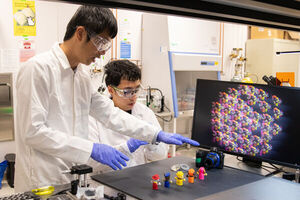
Lensless camera creates 3D images from single exposure
"Real-time 3D imaging method could improve robot navigation and content for 3D displays Researchers have developed a camera that uses a thin microlens array and new image processing algorithms to capture 3D information about objects in a scene with a single exposure. The camera could be useful for a variety of applications such as industrial part inspection, gesture recognition and collecting data for 3D display systems. “We consider our camera lensless because it replaces the bulk lenses used in conventional cameras with a thin, lightweight microlens array made of flexible polymer,” said research team leader Weijian Yang from the University of California, Davis. “Because each microlens can observe objects from different viewing angles, it can accomplish complex imaging tasks such as acquiring 3D information from objects partially obscured by objects closer to the camera.” In the Optica Publishing Group journal Optics Express, Yang and first author Feng Tian, a doctoral student in Yang’s lab, describe the new 3D camera. Because the camera learns from existing data how to digitally reconstruct a 3D scene, it can produce 3D images in real time. “This 3D camera could be used to give robots 3D vision, which could help them navigate 3D space or enable complex tasks such as manipulation of fine objects,” said Yang." [...]

A deep dive into the interior of red dwarfs
"Red dwarfs are the most abundant stars in the Milky Way, making up 70% of all stars. But the physics of their interiors is not well understood. Heat is generated in the core and travels outward to the surface, but it is not clear whether that process occurs via radiation, convection or a combination of the two. The key factor determining whether red dwarfs are radiation- or convection-dominated is the opacity of the internal hydrogen. Lawrence Livermore National Laboratory (LLNL) researchers using the National Ignition Facility, the world’s largest and most energetic laser, are exploring the opacity of hydrogen under the extreme pressures and relatively low temperatures found in the interior of red dwarfs. The research appears in the journal, Physics of Plasmas." [...]

Variable focus thin lens designed for augmented and virtual reality headsets
"New lens lays groundwork for more comfortable, realistic AR/VR experiences Researchers have developed a thin lens with a continuously tunable focal length. The new lens could one day make visual fatigue from augmented and virtual reality (AR/VR) devices a thing of the past. “Many of the 3D displays used in today’s AR/VR devices cause discomfort after long-term use due to the vergence-accommodation conflict,” said research team leader Yan Li from Shanghai Jiao Tong University in China. “Our lens, which is known as an Alvarez lens, can be used to alleviate this problem. This could provide a more comfortable and more realistic 3D experience that would enable more widespread use of AR/VR headsets.” The researchers describe their new lens in the Optica Publishing Group journal Optics Express. It is made from two flat, or planar, liquid crystal elements that can be moved in relation to each other to continuously change the lens’s focal length." [...]
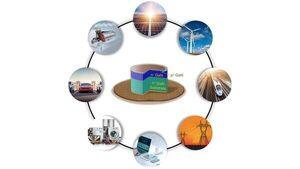
Researchers Demonstrate New, More Energy-Efficient Devices Using Gallium Nitride
"Engineering researchers have created new high-power electronic devices that are more energy efficient than previous technologies. The devices are made possible by a unique technique for “doping” gallium nitride (GaN) in a controlled way. “Many technologies require power conversion – where power is switched from one format to another,” says Dolar Khachariya, the first author of a paper on the work and a former Ph.D. student at North Carolina State University. “For example, the technology might need to convert AC to DC, or convert electricity into work – like an electric motor. And in any power conversion system, most power loss takes place at the power switch – which is an active component of the electrical circuit that makes the power conversion system. “Developing more efficient power electronics like power switches reduces the amount of power lost during the conversion process,” says Khachariya, who is who is now a researcher at Adroit Materials Inc. “This is particularly important for developing technologies to support a more sustainable power infrastructure, such as smart grids.” “Our work here not only means that we can reduce energy loss in power electronics, but we can also make the systems for power conversion more compact compared to conventional silicon and silicon carbide electronics,” says Ramón Collazo, co-author of the paper and an associate professor of materials science and engineering at NC State." [...]

New Fur For The Quantum Cat. Quantum Materials: Entanglement Of Many Atoms Discovered For The First Time
"Be it magnets or superconductors: materials are known for their various properties. However, these properties may change spontaneously under extreme conditions. Researchers at the Technische Universität Dresden (TUD) and the Technische Universität München (TUM) have discovered an entirely new type of such phase transitions. They display the phenomenon of quantum entanglement involving many atoms, which previously has only been observed in the realm of few atoms. The results were recently published in the scientific journal Nature. New Fur for the Quantum Cat In physics, Schroedinger’s cat is an allegory for two of the most awe-inspiring effects of quantum mechanics: entanglement and superposition." [...]

New cathode design solves major barrier to better lithium-ion batteries
"Boundary-free structure for electrode particles eliminates reactions that diminish battery life. Researchers at the U.S. Department of Energy’s (DOE) Argonne National Laboratory have a long history of breakthrough discoveries with lithium-ion batteries. Many of these discoveries have focused on a battery cathode known as NMC, a nickel-manganese-cobalt oxide. Batteries with this cathode now power the Chevy Bolt. Argonne researchers have made another breakthrough with the NMC cathode. The team’s new structure for the cathode’s micro-sized particles could lead to longer-lasting and safer batteries able to operate at very high voltage and power vehicles for longer driving ranges." [...]

Scientists See Spins in a 2D Magnet
"Research shows that spinning quasiparticles, or magnons, light up when paired with a light-emitting quasiparticle, or exciton, with potential quantum information applications. All magnets—from the simple souvenirs hanging on your refrigerator to the discs that give your computer memory to the powerful versions used in research labs— contain spinning quasiparticles called magnons. The direction one magnon spins can influence that of its neighbor, which affects the spin of its neighbor, and so on, yielding what are known as spin waves. Information can potentially be transmitted via spin waves more efficiently than with electricity, and magnons can serve as “quantum interconnects” that “glue” quantum bits together into powerful computers. Magnons have enormous potential, but they are often difficult to detect without bulky pieces of lab equipment. Such setups are fine for conducting experiments, but not for developing devices, said Columbia researcher Xiaoyang Zhu, such as magnonic devices and so-called spintronics." [...]

Physicists Invent Intelligent Quantum Sensor of Light Waves
"University of Texas at Dallas physicists and their collaborators at Yale University have demonstrated an atomically thin, intelligent quantum sensor that can simultaneously detect all the fundamental properties of an incoming light wave. The research, published April 13 in the journal Nature, demonstrates a new concept based on quantum geometry that could find use in health care, deep-space exploration and remote-sensing applications. “We are excited about this work because typically, when you want to characterize a wave of light, you have to use different instruments to gather information, such as the intensity, wavelength and polarization state of the light. Those instruments are bulky and can occupy a significant area on an optical table,” said Dr. Fan Zhang, a corresponding author of the study and associate professor of physics in the School of Natural Sciences and Mathematics. “Now we have a single device — just a tiny and thin chip — that can determine all these properties simultaneously in a very short time,” he said." [...]

Lithuanian researchers created new materials that might increase the stability of perovskite solar cells
"A group of chemists from Kaunas University of Technology in Lithuania, the authors of numerous breakthrough innovations in the solar energy field, proposed yet another solution to increase the stability and performance of perovskite solar elements. They synthesised a new class of carbazole-based cross-linkable materials, which are resistant to various environmental effects, including strong solvents used in the production of solar cells. When applied as hole transporting layers, the new materials developed at Kaunas University of Technology (KTU) labs, helped achieve the 16.9% efficiency of the inverted-architecture perovskite cells at the first attempt. It is expected to reach higher efficiency upon optimisation. New materials thermally polymerised to provide resistance Organic-inorganic hybrid perovskite solar cells have been attracting worldwide attention as a competitive alternative to conventional silicon-based solar technologies. They are cheaper, more flexible and have higher power conversion efficiency." [...]

Researchers devise tunable conducting edge
"A research team led by a physicist at the University of California, Riverside, has demonstrated a new magnetized state in a monolayer of tungsten ditelluride, or WTe2, a new quantum material. Called a magnetized or ferromagnetic quantum spin Hall insulator, this material of one-atom thickness has an insulating interior but a conducting edge, which has important implications for controlling electron flow in nanodevices. In a typical conductor, electrical current flows evenly everywhere. Insulators, on the other hand, do not readily conduct electricity. Ordinarily, monolayer WTe2 is a special insulator with a conducting edge; magnetizing it bestows upon it more unusual properties. “We stacked monolayer WTe2 with an insulating ferromagnet of several atomic layer thickness — of Cr2Ge2Te6, or simply CGT — and found that the WTe2 had developed ferromagnetism with a conducting edge,” said Jing Shi, a distinguished professor of physics and astronomy at UCR, who led the study." [...]
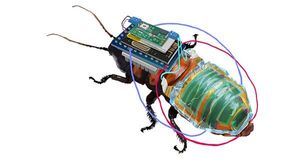
Robobug: a rechargeable, remote-controllable cyborg cockroach
"An international team led by researchers at the RIKEN Cluster for Pioneering Research (CPR) has engineered a system for creating remote controlled cyborg cockroaches, equipped with a tiny wireless control module that is powered by a rechargeable battery attached to a solar cell. Despite the mechanic devices, ultrathin electronics and flexible materials allow the insects to move freely. These achievements, reported in the scientific journal npj Flexible Electronics on September 5, will help make the use of cyborg insects a practical reality. Researchers have been trying to design cyborg insects—part insect, part machine—to help inspect hazardous areas or monitor the environment. However, for the use of cyborg insects to be practical, handlers must be able to control them remotely for long periods of time. This requires wireless control of their leg segments, powered by a tiny rechargeable battery." [...]
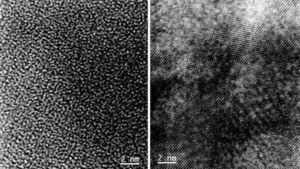
Scientists use novel method to make promising battery material
"Charging and discharging a battery cell transforms its electrode material into a “super” material. Over the last decade, advances in research and development have led to more efficient lithium-ion batteries. Yet, significant shortcomings remain. One challenge is the need for faster charging, which can help speed the adoption of electric vehicles. A research team led by Boise State University and the University of California San Diego has taken an unconventional approach to this problem. Using the resources of the U.S. Department of Energy’s (DOE) Argonne National Laboratory, they created a high performance material for battery electrodes." [...]

CityU invents a method to convert 3D-printed polymer into a 100-times stronger, ductile hybrid carbon microlattice material
"Developing a lightweight material that is both strong and highly ductile has been regarded as a long-desired goal in the field of structural materials, but these properties are generally mutually exclusive. Researchers at City University of Hong Kong (CityU) recently discovered a low-cost, direct method to turn commonly used 3D printable polymers into lightweight, ultra-tough, biocompatible hybrid carbon microlattices, which can be in any shape or size, and are 100 times stronger than the original polymers. The research team believes that this innovative approach can be used to create sophisticated 3D parts with tailored mechanical properties for a wide range of applications, including coronary stents and bio-implants. Metamaterials are materials engineered to have properties that are not found in naturally occurring materials. 3D architected metamaterials, such as microlattices, combine the benefits of lightweight structural design principles with the intrinsic properties of their constituent materials. Making these microlattices often requires advanced fabrication technologies, such as additive manufacturing (commonly referred to as 3D printing), but the range of materials available for 3D printing is still fairly limited." [...]
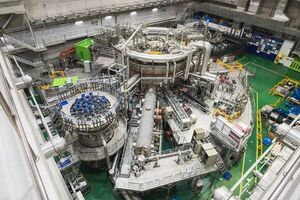
Korean nuclear fusion reactor achieves 100 million°C for 30 seconds
"A sustained, stable experiment is the latest demonstration that nuclear fusion is moving from being a physics problem to an engineering one. A nuclear fusion reaction has lasted for 30 seconds at temperatures in excess of 100 million°C. While the duration and temperature alone aren’t records, the simultaneous achievement of heat and stability brings us a step closer to a viable fusion reactor – as long as the technique used can be scaled up. Most scientists agree that viable fusion power is still decades away, but the incremental advances in understanding and results keep coming. An experiment conducted in 2021 created a reaction energetic enough to be self-sustaining, conceptual designs for a commercial reactor are being drawn up, while work continues on the large ITER experimental fusion reactor in France. Now Yong-Su Na at Seoul National University in South Korea and his colleagues have succeeded in running a reaction at the extremely high temperatures that will be required for a viable reactor, and keeping the hot, ionised state of matter that is created within the device stable for 30 seconds." [...]
Projetos Maker
Diversos Projetos interessantes.

LATTEintosh DIY Mini PC
"LATTEintosh is a DIY PC Made entirely from scratch, Latte Panda 3 Delta is used here and it runs Windows 10! So here's something super cool, a full-size Macintosh 128K-inspired PC completely 3D Printed and made from Scratch.So here's something super cool, a full-size Macintosh 128K-inspired PC completely 3D Printed and made from Scratch. The heart and brain of this project is a Latte Panda 3 Delta which is a Single Board computer powered by an Intel N5105 11th Gen Mobile Processor, it has 8GB LDDR4 Memory with 64GB eMMC onboard. As for the display, I'm using a 7-inch HD Display from a previous project that was a Handheld Gaming device. That setup was functional but it lacked power as it had Raspberry Pi 3B+ with only 1GB Ram. However, this current setup more is much powerful in terms of processing power, RAM, Storage, and other stuff." [...]

OLED RGB CO2 Monitor
"Monitor the CO2 level and display the measurements on an OLED screen. Supplies: - 1 x WS2812B RGB LED - 1 x Arduino Nano - 1 x MH-Z19C - 1 x USB Cable - 1 x 0.96 inch OLED Screen - Dupont cables" [...]
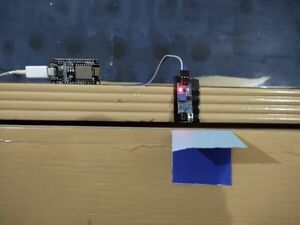
Automated Door Security System
"This system informs us that whenever a door is opened on our website. This system utilizes IR sensors to detect the movement of the door. Story: As IoT is a very emerging and interactive field, we were very curious about the devices and interconnected networks which can be built using IoT. Western culture as well as some companies are trying their effort to evolve this technology. So we guys took IOT Bootcamp organized by grandeur. Our main goal was to know more about the field and after that, we made a security system that helps us to secure the targeted area with infrared sensors." [...]
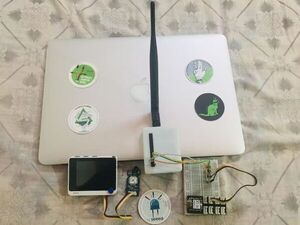
P2P Communication using LoRa E5
"For the last few days, I was trying to build LoRa P2P communication using LoRa E5. Finally, Hendra's documentation clears all my doubts. For this documentation, I use Wio Terminal LoRaWan Chassis as thesender and Grove - Wio-E5 as the receiver. You can use any LoRa E5 module to implement this. For this, I connect Wio Terminal LoRaWan Chassis with XIAO RP2040 using grove connectors and XIAO shield as given below. " [...]

I made my own NRF24L01 module
"A practical circuit of NRF24l01 that works well with any type of Arduino. Let's build own NRF to know connection setup. Previously, I made all in one Arduino board this has some extra features of external headers, FTDI and sensor and module mounting. It is very easy to build and a perfect development board for the new hobbyists. You can see the building instructions and components used from here. By the way, RF Arduino is also a popular board nowadays." [...]

Toy AVR OS
"As an educational project I could do purely in software, I decided to make a toy OS for an AVR microcontroller from scratch. I wanted a cutesy name so I chose KittyOS and made the logo. Unsurprisingly, I’m not the first to use the name and found https://github.com/carangil/cat644 which is actually a very interesting surprisingly related project where someone wrote a retrocomputer emulator to run on a Atmega644. This is by far the longest write up I’ve done. I wrote it as I was going through the process, with additions after the fact. To get most of the meat without going into the weeds on the particular struggles I faced, I recommend skipping between the Intro, Setting Up Task Switching, and the last few sections starting with Boot Loading." [...]

Holo Clock
"3D printed and run by a single stepper motor, this unique clock's hands float in a hollow frame. The changes that I made were: - Use of a cheap 28BYJ-48 stepper motor - New electronics based around a ATtiny1614 microprocessor - New software 3D printing This build uses a 28BYJ-48 stepper motor so "frame_1__n.stl" and "motor_gear.stl" are replaced with "Motor Plate V1.stl" and "Motor_Gear_V1.stl" respectively. Also "Rollers.stl" and "Spacers.stl" replace "p1.stl" and "SPACERS.stl" respectively. Also "Button.stl" replaces "botton.stl". As the gears need to rotate freely, I inserted 4mm brass tubes into each of the gears ("big_gear_1" to "big_gear_3"). You can buy these brass tubes from most hobby shops." [...]
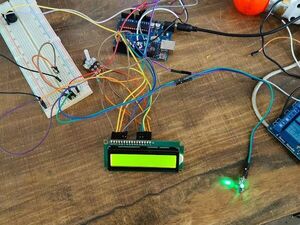
IoT based health monitoring system
"IoTbased patient health monitoring system using Arduino and generic ESP8266. The proposed project can collect and send patient’s health data. Story IoT based patient health monitoring system is a generic term given to any medical equipment that has internet capability and can measure one or more health data of a patient who is connected to the device such as heartbeat, body temperature, blood pressure, ECG, steps etc. The equipment can record, transmit and alert if there is any abrupt change in the patient’s health. By this definition, it includes devices such as smart-watches, fitness trackers, smart-phones to expensive hospital equipment which can connect to internet. IoT based health monitoring system is used where the patient and heath expert(s) are at different locations." [...]
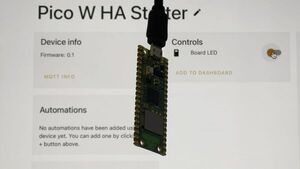
Raspberry Pi Pico W Home Assistant Starter Project Using arduino-pico
"I'm pretty excited about Pico W: it's such a reliable, high-quality board and each one costs just $6 (if you can find one). I'm building an IoT project with Pico W and Home Assistant, and it took weeks of research and experimentation to figure out the basics of integration of all the necessary components. This starter pulls together everything I've learned so you can get to building quickly. Fill out src/Credentials.h, upload to your Pico W, then you'll have a working integration that allows you to toggle the Pico W's board LED from the Home Assistant dashboard. From this starter you'll have a solid foundation to build your own custom device in a private, local Intranet of Things. " [...]
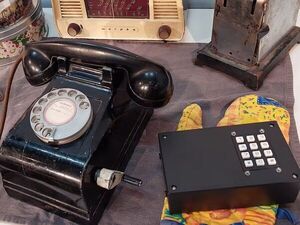
Partyline Telephone Ringer
"Make a old-style telephone ring with ten party-line (Morse) codes plus the standard USA and New Zealand ringing cadences. Story I've been an amateur theatre nut for 50 years and was challenged to make a 1950's party line telephone ring on stage with various ringing cadences for the Pip Hall play "Up North". I used to be a telephone technician for some 20 years in the 70's and 80's, so am familiar with the requirements to make this work: 60VAC at 20Hz. Plus up to ten ringing cadences using Morse code for the letters A, D, J, K, M, R, S, U, W and X. Then I'll be operating this as well as playing the music, the sound effects and operating the lighting, so I'll have my hands full during the performances too! I decided to use an Arduino Nano to generate both the ringing cycles of 20Hz as well as the various ringing cadences." [...]

Micro Component Tester
"Test transistors, diodes, thyristors, resistors, capacitors and inductors. Also identify their leads and obtain their component value. Story When starting my journey into the world of electronics, I obtained a lot of parts by disassembling discarded electronic devices to salvage the individual components. One of the issues I had was identifying what some of the components were and whether they were any good. Even now, I still find it worthwhile to confirm the identity of the leads on transistors even on brand new ones. There are many builds of component testers around and this is just one more of them." [...]
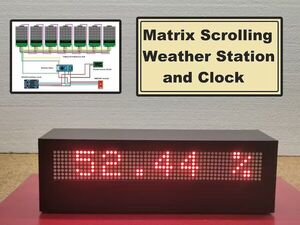
Arduino matrix scrolling weather station and Clock with BME
"How to make a scrolling weather station that displays the temperature, air humidity and relative atmospheric pressure, and Time. Story From one of my previous projects (Bluetooth-controlled scrolling text), I have a finished 8x56 LEDs matrix consisting of 7pcs MAX7219 Led matrix modules 8x8, and located in the appropriate box. I used this ready-made matrix to make a scrolling weather station that displays the temperature, air humidity and relative atmospheric pressure, as well as the current time. For this purpose, I use a BME280 sensor and a DS3231 real-time clock module, so the device works independently of an Internet connection. The BME280 board is placed on the outer side of the case for more accurate readings, and it can also be placed outside with the help of a four-wire cable. Let me mention that these matrix modules are older type, and as you see (in the given picture), contain DIL IC on the front." [...]
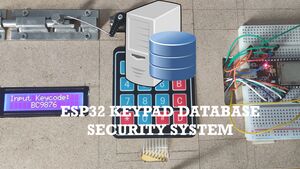
ESP32 Keypad Database Security System
"In this article, I am going to show you how I created my ESP32-based door lock mechanism using a keypad and a database to store my valid list of keycodes. The ESP32 board interfaces with a keypad, an I2C LCD display, and my manual door lock that is being controlled by my servo motor. It then connects to my Representation State Transfer API (REST) web service built using Node.js. The keycodes entered by the user thru my keypad is then validated to the list of valid keypads stored in my MongoDB database. " [...]

Arduino Soundlab
"A 3D printed Arduino Nano based synthesizer that produces a wide range of amazing sounds generated using the FM synthesis technique. Story About a year ago, a small synthesizer called Scout Synth was uploaded to Thingiverse by oskitone. I really liked the 3D printed keyboard. A few years before, I had build a synthesizer called Arduino Soundlab based on an Instructable by rgco. So I decided to update my version to include this keyboard. " [...]

Arduino Bluetooth Controlled Solar Smart Security for Home
"This project help us to get our life easier. It will detect many things and show the alert on our device which can controlled by Bluetooth Introduction I have developed all in one smart home idea which help us to face difficulties in our daily life. It makes our work easier and provide us a very high security. The main idea to build up this project is to use a renewable resource of energy solar panel and to get best level of security with auto on off detection information and many other The function is as under We can check and keep an eye of many things through our mobile by just connecting by Bluetooth The auto detection technology of the project help to determine day and night to on light automatically accordingly On mobile we will get alert about rain. There is many level of security We can check the distance of people from our house or door to prevent robbery or any other consequences A buzzer will start beeping in different sound accordingly to level of danger We can also turn of and on many things as per our requirements This project help us to make our life easier Working on Basic The whole circuit is been powered Arduino UNO (Board) and Board is powered by Rechargeable Lead Acid Battery and that is powered by Solar Panel. It contains a code which uploaded to the board." [...]
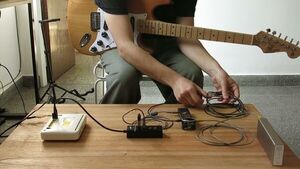
How to connect a guitar to an ADSL router?
"Among all the discarded and old devices that I find or close people give me, I had an old Speedy ADSL router in my closet (Speedy was an old ISP). The device in question is an Huawei HG532s. This router comes with a USB port. Knowing that routers usually have an embedded Linux system on it, we can imagine several possible scenarios to use that USB port, different from the default one that they come with (they are mainly designed to connect a disk drive that could be a pen drive and access files from the network, or to connect a 3g modem). An interesting scenario is to be able to connect an audio interface and do something that “sounds”. I remember that some time ago I came across a similar project that created a kind of “WiFi Radio” when stuff like Chromecast did not yet exist on the market: youtube.com/watch?v=Bp26xFBwrJs." [...]
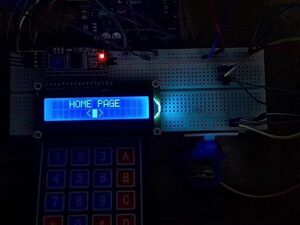
Door Security System
"With the door security system, you can control it through the interface on the arduino. Firstof all, hello. I like to share and make projects which occours to me. This isbecause of I like to make software with patterning enviroment. The projectwhich named gate security system has been showed up in this way. Before, telling the project, I want to talk about the components on this project." [...]

ESPHome Remote
"iPod style wifi smart home remote. Uses ESPHome and Home Assistant to integrate with Sonos, Roku and run custom scenes and scripts. Supports many different hardware configurations: - M5Stack Fire (no additional hardware) - Lilygo T-Display T4 (no additional hardware, scrollwheel coming soon) - Lilygo T-Display TTGO with Adafruit ANO Scrollwheel" [...]
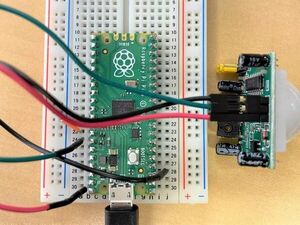
Motion detection with an Arduino and a Raspberry Pi Pico
"user-friendly programming language MicroPython for this project Since the Raspberry Pi Pico was on sale approximately six months ago, I believe it has been used in a variety of electrical crafts and peripheral modules. In these conditions, I experimented with employing a pyroelectric motion sensor that was described in the official manual to detect motion. The switch science online shop sells the sensor that was utilised this time. We will utilize the user-friendly programming language MicroPython for this project. Burn the firmware that MicroPython uses to run on the Raspberry Pi Picothat can be downloaded from this page using the "Download UF2 file" link. To store the downloaded UF2 file with D&D after burning, press the "BOOT SEL" button on the main unit and attach it to the PC so that it will be recognized as a folder." [...]

Pocket265
"Handheld PC based on the original 6502 CPU that fits into a pocket. Features - 12 digid 16-segment LED display (DL1414), - optional 8x2 standard LCD (not supported yet in FW), - 24 button keyboard, - 8 KB of ROM and 8 KB of RAM, - I2C 24xx EEPROM memory (16 bit addressing, up to 64 KB), - built-in Li-Po power supply, charger and visual voltage indicator, - monitor FW that allows memory edit and running user programs, - expansion slot with 5 chip selects (up to 40 KB of external I/O and/or memory), - based on my Pocket65 project (github.com/agkaminski/Pocket65) with partial compability. " [...]
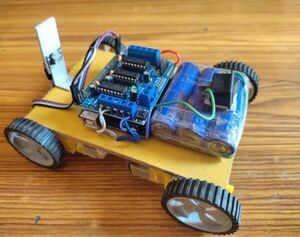
Arduino Bluetooth Car
"In this project we are going to make a Bluetooth Controlled Robot Car using Arduino. Although remote controlled robots(Car) that are available in the market are controlled by an RF remote, But this is the time of android phones. So I decided to make a wireless controlled Robot Car with arduino. To control this robot car we do not require any kind of RF remote, This car can be controlled by any one that uses android phone. So let's make this awesome project. Supplies: - Arduino UNO - Adafruit Motor Shield - 4-Gear Motors - 4-Wheels - HC-05 Bluetooth Module - 3-Li-ion Batteries - Switch - Jumper wires (female to female) - Ribbon Wire - MDF Board - USB cable (that arduino Uno supports) - Fevicol (glue) - Double Sided Tape - an Aluminum L-shaped strip with an screw" [...]

PS4 Controller Breakout Board PCB
"In this Instructable, I'll describe the process I used to create a breakout board for my broken PS4 controllers. When I took mine apart, I discovered that most of the buttons connect via a membrane keypad, and a custom PCB would be required in order to make the necessary matching contacts. Supplies - PS4 controller with a bad brain and/or battery - Small screwdriver - Solderless breadboard - Header pins and/or prototyping wires - 2x tiny tactile switches - 1x small tactile switch - 2x joysticks" [...]
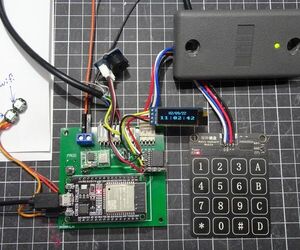
Multifactor RFID and One Time Password Door Access Module
"RFID access to doors is great, but what if the tag gets lost or stolen? It gives any possessor unvetted access. I've used RFID tags for a long time but the inherent security of standard cards is the same across most systems and many tags can be duplicated with simple tools. Only the expensive commercial systems can't be copied or employ their own multifactor system such as a pin and/or fingerprint in combination with the tag being read. A step further is to use a Time Based One Time Password (TOTP) in combination with the relatively low security of the RFID to be able to gain access. Most of you probably use multifactor authentication in some form in your lives already - For example when a bank sends you an SMS code to authorize a transaction or logging in to some websites." [...]

DIY Wireless Water Level Controller
"In this Instructable, we will learn how to make a wireless water level controller by using an ESP32 and ESP8266 microcontroller. This controller has voltage and current protection to protect the motor. And it uses ESP-NOW protocol to transmit data. features - Wireless - High and Low voltage protection - Overload and Dry run protection - Inbuild buttons for settings - Store settings in flash memory - 1.8inch TFT display - Shows voltage, current, power and power factor. - Mode selection switch - Top up button. Why a water level controller?" [...]
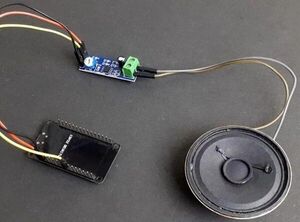
ESP 32 Based Audio Player
"In this project we will make our own audio player with esp 32. This project is a simple project to test a voice output from esp 32. We can seemany projectsin the internet to play music with esp 32 usingI2S Protocol. For that you need a separate SD card slot where you can plug in your SD card filled with music. You can play that mp3 file of that SD card with the help of speaker by using I2S protocol. In this project we are doing the same thing differently without using SD card module." [...]
DIY Arduno "Ohmeter" + 0.96" OLED Display +Indication LEDs + Custom PCB
"The Crius Resistor Tester is a handy little Gadget I made for my projects that help me measure the value of a Resistor. The logic behind its operation and the code as far as I can understand and I AM NOT PROFESSIONALLY Electronics or Physicist, is Ohm's Law. If you notice in the circuit below we use a 10kOhm resistor and 1 position for the resistance we want to measure. Knowing the value of one resistor in a circuit with 2 resistors we are looking for the value of the second resistor. From Wikipedia, the free encyclopedia : - Ohm 's Law ( in EnglishOhm's Law ) connects Voltage , Current and Resistance . There are two Ohm's laws, the open - circuit Ohm's law referred to a resistor[1] and the closed-circuit Ohm 's law ." [...]
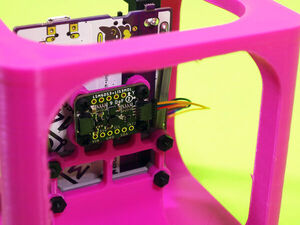
Controlling Objects in Unity with a 9 DoF Sensor and Arduino
"Unity is one of the most widely used game engines for developing video games. In this guide, you'll learn how to integrate your Arduino based hardware projects with your Unity projects to create interactive experiences. Data from a 9 DoF sensor is sent over a serial connection from the board to a C# script in Unity. The C# script is set up to affect Unity objects with the incoming data. Calibrating Your 9 DoF Sensor The Adafruit LSM6DS3TR-C + LIS3MDL board has an accelerometer, gyroscope and magnetometer onboard, making it a 9 Degrees of Freedom (DoF) sensor. You can calibrate the various sensors for the most accurate movement measurements possible using the How to Fuse Motion Sensor Data into AHRS Orientation Learn Guide." [...]

Open Source StopWatch
"This project is a simple StopWatch for measuring times on different processes or activities. The project was chosen to test some 4-layers PCBs and experiment with the XLP (Extreme Low-Power Technology) of the PIC18LF14k50. You can measure from milliseconds up to 99h. The PCB does not have any power button, since the project's approach is to use the XLP technology of the PIC. It only has two buttons: the start/mode button and the pause/stop button. Supplies: - 1x PCB - 1x PIC18LF14K50 - 1x Green LED (0805 metrics) - 11x NPN 600mA - 10x 220 Ohm resistor (0805 metrics) - 1x 100 Ohm resistor (0805 metrics) - 11x 4K7 Ohm resistor (0805 metrics) - 6x 10K Ohm resistor (0805 metrics) - 1x Buzzer 5V - 3x 0.1uF Capacitor (0805 metrics) - 1x CR2032 Battery Holder - 1x 4-Display 8 digits (3461AS) - 2x Tactile Push Buttons - 2x ZLLS410TA diode - 1x Inverter IC (74LVC1G06GW,125)" [...]
Secção Videos
Videos interessantes.
That's all Folks!





